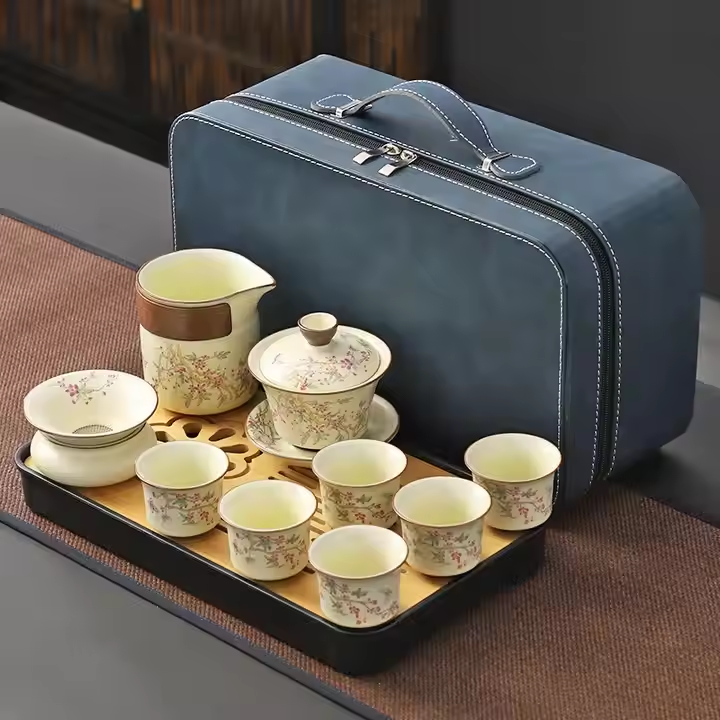I. Visual Characteristics
- Shape and Lines
- Symmetrical and well-proportioned form with smooth, natural contours. For example, the proportions of a plum vase’s mouth, body, and base should harmonize[4].
- Flat base with cleanly finished foot rings, ensuring stable placement and no burrs[8].
- Color and Luster
- Glaze should be uniform and pure. New porcelain often appears overly glossy, while antique pieces exhibit a soft, inner luminescence[1]. For instance, underglaze blue (qinghua) should be vibrant, and Ru ware should display consistent celadon tones[4].
- No visible “wave marks” under backlighting. High translucency indicates thorough vitrification (testable with a smartphone flashlight)[7].
- Decorative Patterns
- Designs should be intact and crisp. Gold/silver detailing must adhere firmly without fading when wiped. Underglaze patterns are protected by a transparent coating, enhancing durability[^1][^2][4].
- Inferior pieces often show blurred, broken lines, peeling patterns, or garish color combinations[^6][8].
II. Craftsmanship and Material
- Body Quality and Density
- High-quality porcelain features fine, dense clay. Kaolin-fired bodies are pure white and sturdy. A crisp, bell-like sound when tapped indicates integrity; a dull tone suggests cracks or low density[^1][^4][7].
- Hand-thrown bodies reflect artisan skill, while natural mineral glazes produce jade-like textures[5].
- Glaze Integrity
- Surface should be smooth, free of pinholes, bubbles, or impurities. Poor-quality glaze feels coarse and chips easily[^1][8].
- Body-glaze bonding must be tight. Antique pieces resist weak acid cleaning, while imitation glazes may peel or contain artificial adhesives[1].
III. Functionality and Safety
- Performance
- Reinforced porcelain resists chipping, magnesia porcelain retains heat, and bone china is lightweight yet fragile—choose based on use[2].
- Low water absorption: Droplets on high-quality porcelain remain beaded without seeping[6].
- Safety Standards
- Prioritize in-glaze or underglaze techniques to avoid heavy metal risks from overglaze paints. Check lead/cadmium migration test reports[^2][8].
- Avoid cheap online glazed tableware with low compliance rates. Opt for brands with “China Green Product Certification”[2].
IV. Authentication Methods
Use the “Observe, Listen, Compare, Test” approach:
- Observe: Check glaze smoothness, symmetry, and base finishing.
- Listen: A clear, resonant sound indicates full vitrification.
- Compare: Ensure color consistency and component harmony in sets.
- Test: Verify lid fit or specialized functions (e.g., a公平杯’s controlled pour)
